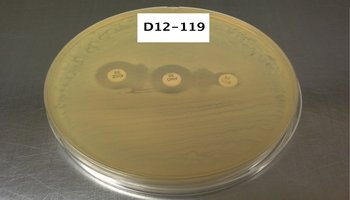VOLUME 7 NUMBER 2 (July to December 2014)

Philipp. Sci. Lett. 2014 7 (2) 438-444
available online: December 26, 2014
*Corresponding author
Email Address: cruz.merlyn@auf.edu.ph
Submitted: November 13, 2014
Revised: December 12, 2014
Accepted: December 12, 2014
ARTICLE
Evaluation of extended-spectrum beta-lactamase production in Escherichia coli clinical isolates from three hospitals in Luzon, Philippines
by Merlyn C. Cruz*1,2, Catherine S. Bacani1, Alma B. Mendoza1, and Cynthia T. Hedreyda2
1Angeles University Foundation, Angeles City
2National Institute of Molecular Biology and Biotechnology, University of the Philippines, Diliman Quezon City
2National Institute of Molecular Biology and Biotechnology, University of the Philippines, Diliman Quezon City
The increased spread of pathogens producing extended-spectrumbeta-lactamase (ESBL) enzymeamong members of family Enterobacteriaceae hasbeen a serious problem worldwide. The absence ofa fast and accurate detection protocol for ESBLproducers had contributed to treatment failures in ESBL-associatedinfections. This study focused on the isolation of phenotypicallyESBL-producing E. coli isolates from 3 hospitals inLuzon, Philippines. The availability of confirmed ESBLs is valuablein conducting experiments to gain information about ESBLsthat are relevant to the identification of detection markers forthese pathogens. Out of 119 pathogenic E. coli isolates fromclinical samples such as urine, wound, body aspirates and blood,37 (31%) were identified as suspected ESBLs using a preliminarytest and 27 of the 37 suspected ESBLs were confirmed asESBL producers based on a test referred to as double-disk synergytest. The highest percentage of ESBL-producing E. coli wasobtained from urine specimens, while the lowest was from bloodsamples. All the ESBL-positive isolates exhibited resistance tocefotaxime and to levofloxacin. Co-resistance to other antibioticslike trimethoprim-sulfamethoxazole, ciprofloxacin, tetracyclineand cefepime was also noted in some isolates. Susceptibility ofESBL-producers remains high towards carbapenems. These findingspoint to the urgent need to develop a fast and accurate detectionprotocol (including a molecular approach) for ESBL-producingpathogens.
© 2025 SciEnggJ
Philippine-American Academy of Science and Engineering